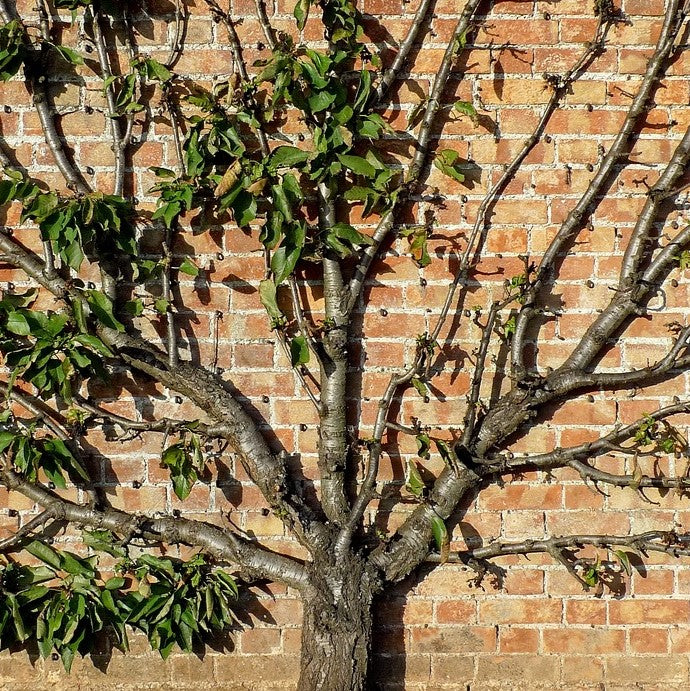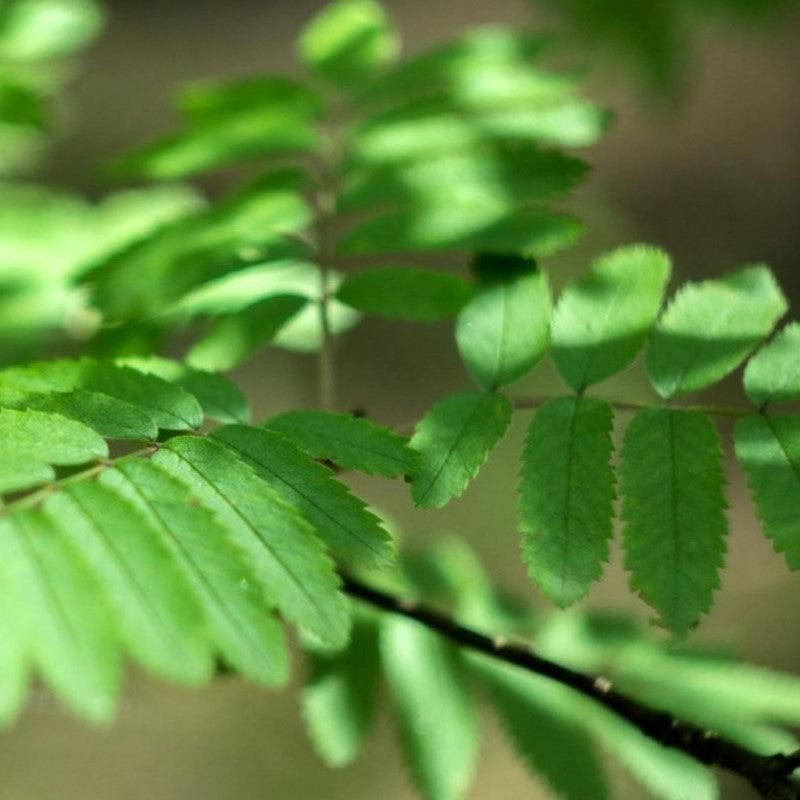Advice & Inspiration
Growing Blackcurrants, Redcurrants and Whitecurrants

Currants are some of the easiest fruit plants you can grow. They’re perfectly acclimatised to the UK’s weather conditions and need very little maintenance once they get going. From then on, they’ll reward your (minimal) efforts with heavy crops of juicy, vitamin C-packed fruits for anything up to twenty years, so it’s definitely worth getting them off to the best start! Read on for all you need to know about growing blackcurrants, redcurrants and whitecurrants.
Jump to:
- Growing blackcurrants from seed
- Growing blackcurrants from cuttings
- Growing currants from plants
- Planting currant bushes
- Currant plant care
- Currant plant problems
- Harvesting currants
- Storing currants
How to grow blackcurrants from seed
This process might take a long time, but it can be really satisfying to raise your own currant plants from scratch. First, collect your seeds by crushing up some currants and soaking them in water for a couple of hours. The seeds that sink to the bottom are the ones you want! Rinse these and discard the rest.
Mix your seeds with some damp sand or peat moss, put the mixture in a plastic bag and stick it in the fridge for 3-4 months. This mimics the natural process of stratification (winter dormancy) that the seeds need before they germinate.
The next step is to sow the seeds. Use a well-draining potting mix and plant the seed+sand/moss mixture about half a centimetre deep in pots or seed trays. Give them a little water and place them in a warm location (a sunny windowsill is good, as long as the sunlight isn’t too direct).
After a few weeks or months, you should see your seeds germinating. Keep checking on them and watering if necessary, then once you have seedlings with a few leaves, you can harden them off and plant them in larger pots or into the garden.

Growing blackcurrants from cuttings
Want to skip a few months? Try growing a currant plant from a cutting. You can take these from an existing currant bush while the plant is dormant (between November and March) for hardwood cuttings, or from May to June for softwood cuttings – either way is good.
Your cuttings should be about 15-20cm long, with at least 3-4 buds. Remove the lower leaves from the cutting and make cuts just below a bud at the bottom and about 1cm above a bud at the top, to get the plant’s hormones flowing in the right direction.
You can also help your cutting take root by dipping the cut end in Rootgrow. Plant your cuttings 5cm apart in pots of well-draining potting mix, ideally with two buds under the soil and two above, and water them well.
Place your pots in a warm, sheltered place out of direct sunlight – you can cover them with plastic bags to speed up the process, but make sure you remove these from time to time, to stop them going mouldy from excess moisture.
Your cuttings should develop roots within a few weeks (softwood cuttings) or a few months (hardwood cuttings). Once this happens, you can harden them off and plant them in larger pots or into the garden.

Growing currants from plants
Not got time for all that palaver? Get a currant plant. These are available as bare roots from November to March, or as potted plants all year round. Simply choose the one you like best, plant as below and wait for the fruit to roll in.

Planting currant bushes
Bare root currants
Bare roots can be planted at any time during the dormant period (November to March) as long as the ground isn’t waterlogged or frozen over. When you get your bare root plant, you’ll need to soak the roots in a bucket of water for thirty minutes to an hour, then follow the same steps as for potted plants below.
Potted currants
You can plant these at any time of year, as long as the ground isn’t frozen or waterlogged. Dig a hole as deep as the roots and three times as wide, then gently remove the plant from its nursery pot and place it in the centre.
Making sure your plant is level, fill in the soil again, adding some fresh compost for nutrients. Firm down the soil around your plant and give it a good watering, then add a good layer of mulch around the base to keep moisture in the soil and weeds out.
Currant bushes should be planted about 1.5m apart if you have more than one, so that they can spread out and get plenty of air flowing through them. Blackcurrants are the best for a lightly shaded spot, but prefer full sun, whereas redcurrants, white and pink currants do best in sunnier positions. You can find more growers’ tips in our planting fruit bushes article.

Currant plant care
Now your currant plant is in the ground or its pot, what do you need to do? Not much, you’ll be pleased to hear! Just follow these few simple steps and your plant will be thriving in no time.
How much water do currants need?
For the first year or so, water your currant plant regularly, making sure the soil is always moist but never waterlogged. After that, your plant will have established a good root system and won’t need watering except in hot or dry weather. Remember, though, that plants in pots will need more watering than those in the ground as their soil dries out quicker.

Do you need to feed currants?
You don’t need to fertilise currant plants, but it can improve your crop (or revive an older plant that may need a boost) if you do. Give your plants a balanced fertiliser every year in early spring and again in mid summer, and at the same time apply a layer of mulch around the base to help retain moisture and suppress weeds.
Growing blackcurrants in containers
Currant bushes of all kinds do well in large containers - at least 45cm wide and deep is best. Use a good quality compost, place the pot in a sunny or partially shaded spot, then feed and water your plant regularly.
A layer of mulch at the top of the pot is especially helpful, as it will help the plant to stay hydrated for longer. If you find that your plant is slowing down in fruit production or has outgrown its pot after a couple of years, you might want to transfer it into the ground or find a larger pot.

How big do blackcurrant bushes grow?
Most blackcurrant bushes will grow to a mature size of 1.5 x 1.5m, but you can always prune them to keep them smaller if you need to. The same sizes apply roughly to white, pink and redcurrants, although redcurrants can also be trained as cordons if space is tight.
Do currants need any winter protection?
Currant plants are fully hardy and will withstand the worst of UK winters: many of them are bred in Scotland, so they’re made of tough stuff! This means that you won’t have to worry about winter protection.

Pruning currant plants
After the first growing season, you should start pruning your currant plants. Do this annually in late winter or early spring to remove dead or diseased wood and to encourage healthy new growth.
If your currant bush is well-established, you can prune out up to half (or 8-10) of the biggest stems, cutting to around 5cm from the base, above an outward facing bud. The best shape to aim for when pruning is an open goblet shape, which will allow good air circulation through the plant and help to prevent moulds and mildews.
Currant plant problems
You’ll be glad to know that there are very few pests or diseases that bother currant plants! They’re generally highly resistant to both, but keep an eye out for the following problems, especially in very young plants, as they’re more vulnerable than older, more established bushes.
Aphids
Sigh. They get everywhere. Small populations of aphids won’t usually be a problem for full-sized plants, but new growth in spring can be vulnerable to these sap-sucking pests.
You can get rid of them by spraying your plant with a vegetable oil or soap spray, or wiping them off with a damp cloth. Longer term, planting marigolds or other companion plants near to your currants will help to deter aphids and encourage their predators, such as ladybirds.

Spider mites
Tiny bugs that are greenish-brown in summer and red-brown in autumn, these little fiends live on the underside of leaves and can weaken your plant. You can use the same methods as above to get rid of them, or if your plant is badly affected, prune away the affected parts.
Powdery mildew
This fungal disease is one of the few to affect currant bushes, and is mainly seen in summer. It appears as a thick white dust on the leaves, which stops them absorbing sunlight and kills them.
You can guard against powdery mildew (and all moulds and mildews) by keeping your plant well-pruned so that it has a nice open shape, allowing good air circulation and reducing humidity.
If you do see powdery mildew on your plant, remove all the affected parts of it and spray the plant with an antifungal preparation such as neem oil or potassium bicarbonate.
When to harvest currants
If you’ve grown your currants from plants, you may well see fruit in the first summer after planting, but you’ll need a little more patience if you’ve grown them from seed or cuttings, as a plant needs to be about 2-3 years old before it typically starts fruiting.
If your plant does produce fruit, you’ll see strings of small green currants forming from spring onwards. Your currants will be ripe and ready at any point between July and August, and you can harvest them when they’re plump, firm but slightly yielding and have reached their full colour.
To harvest, snip off the currant strigs (the little string-like trusses on which they grow) with scissors or pruners and remove the individual currants gently by hand afterwards. They’re really delicate and need careful handling so as not to get squished.
Once your plant is fully mature, you can expect anything up to 5kg of fruit per year, depending on the variety, weather and growing conditions.

How to store currants
Freshly harvested currants can be kept in the fridge for up to two weeks – they’ll last better if you keep them on their strigs until you need to use them. If you have a lot of currants, you can freeze them, dry them or make them into jams and cordials.
To freeze your crop, lay out the currants on a baking tray with plenty of space between them, then when they’re frozen, you can transfer them to a freezer bag. This avoids them melding together into a weird mass! Frozen currants will keep for up to a year.
To make dried currants (excellent for Christmas baking), you can use a food dehydrator if you have one, or simply use an oven. The process does take around eight hours, so make sure you have enough fruit to make it worthwhile.
Heat your oven to 100°C, then lay out the fresh currants on a baking tray and start cooking. Check them regularly to see if they’ve reached the level of dryness you want. Dried currants can be stored in an airtight container for up to two months or in the freezer for up to a year.




















